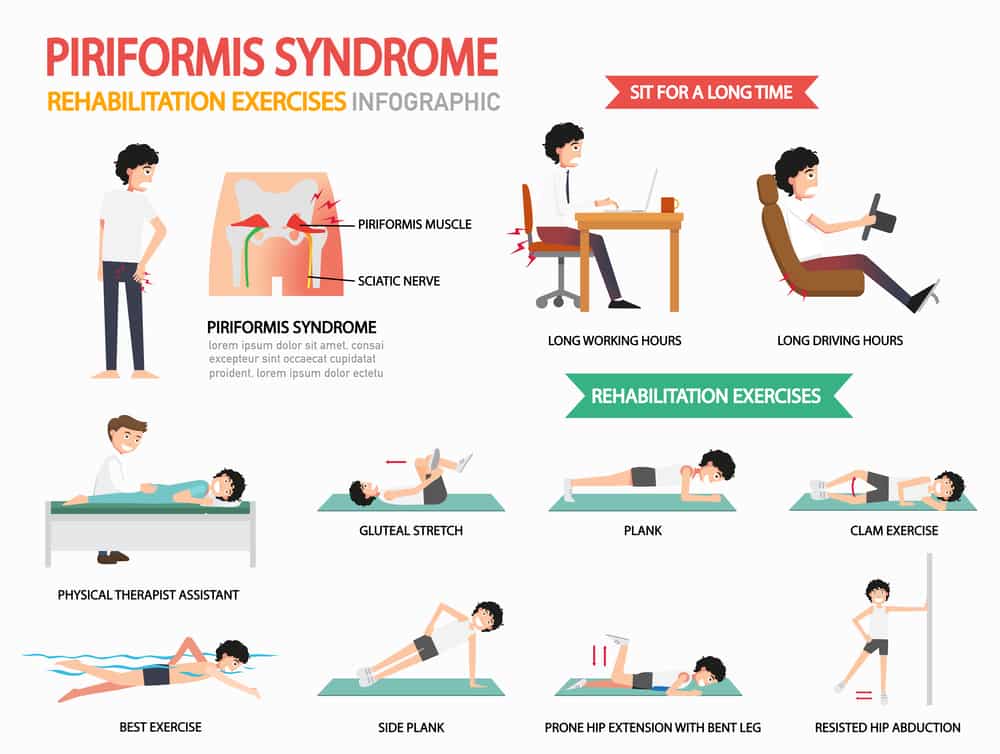Have you noticed your leg feels numb or has started to tingle? Are you experiencing constant leg pain? There’s a chance you’ve developed piriformis syndrome. Piriformis syndrome affects 200,000 people in the US each year. What is piriformis syndrome, exactly? What causes this condition and how can you treat it? Keep reading to find out! In this guide, we’ll review everything you need to know about the causes, treatment, and symptoms of piriformis syndrome and how chiropractic may help.
What is Piriformis Syndrome?
First, let’s answer the question that’s likely on everyone’s mind: what is piriformis syndrome? This syndrome is a neuromuscular disorder that develops when your piriformis muscles compress your sciatic nerve. The piriformis muscle is located in the buttocks, above your hip joint.
This muscle helps us maintain our balance, walk, and shift our weight between both legs. It also helps us lift or rotate the thighs. In other words, it’s a component of every movement involving the legs and hips. Your sciatic nerve passes through the piriformis muscle and extends down the back of your leg. When the piriformis muscle irritates your sciatic nerve, it can cause pain and other symptoms.
What are the Causes of Piriformis Syndrome?
The causes of piriformis syndrome are unknown. However, doctors have deduced a few probable causes.
For example, your muscle could tighten after you’ve sustained an injury or experienced a spasm. Such an incident could cause the piriformis muscle to swell as well. Muscle spasms and bleeding are potential causes too.
Piriformis Syndrome Symptoms
Piriformis syndrome symptoms include:
- Increased pain after you’ve remained seated for some time
- Reduced range of motion of your hip joint
- A dull ache in your buttock
- Pain down the back of your half, thigh, and foot
- Pain when you walk up stairs
These symptoms could get worse after walking, sitting, or running for some time. You might begin to feel better after lying on your back.
Piriformis Syndrome Treatment
Your doctor will complete a physical examination and instruct you to move your hip to recreate the pain. They’ll also use diagnostic tests such as an MRI or X-ray.
Once they’ve reached a diagnosis, your doctor might instruct you through a series of stretches. Stretching the hamstrings, hip extensors, and piriformis could ease your pain symptoms.
Your doctor might suggest physical therapy or a deep tissue massage as well. Physical therapy can stretch the muscle to reduce spasms. Massage therapy can increase blood flow to the area for healing.
Improving your posture could help you prevent piriformis syndrome from developing. Use good posture while exercising, running, and walking, too. Consider visiting a chiropractor to ensure your spine is aligned to improve your posture.
What is Piriformis Syndrome?: Your Complete Crash Course
To recap, what is piriformis syndrome? It’s a neuromuscular disorder that could cause pain and tingling in the leg and buttocks. Don’t live life in pain! Instead, consider visiting a licensed massage therapist. Start healing today. Ready to schedule your first appointment? We can’t wait to see you! Request an appointment with our team today to get started.




